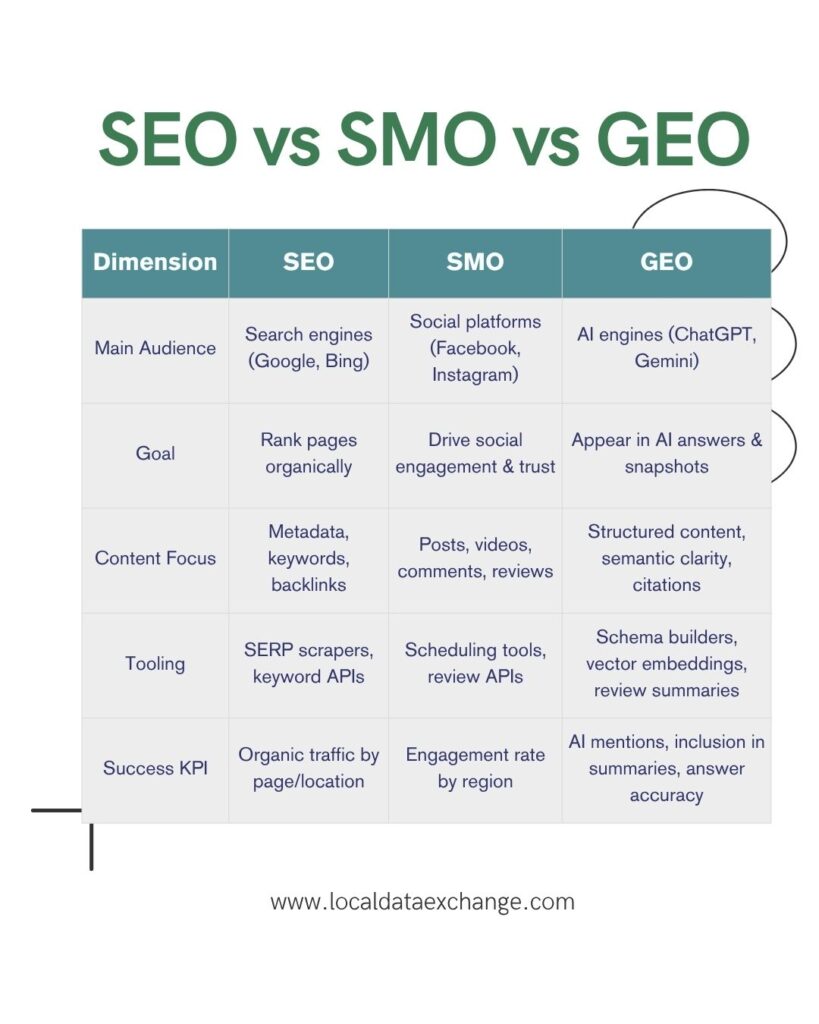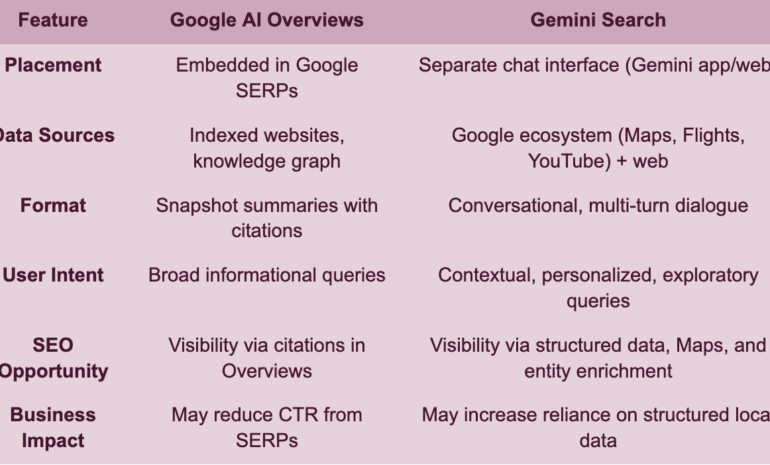As search evolves, SEO is no longer one monolithic strategy, it’s fracturing into distinct but overlapping layers. If you’re a SaaS SEO platform powering multi-location brands, understanding these layers: SEO (Search Engine Optimization), SMO (Social Media Optimization), and GEO (Generative Engine Optimization), is no longer optional. It’s fundamental.
In a world where AI search agents like ChatGPT, Gemini, and Copilot reshape the way people discover information, you need to build systems that support each layer of visibility: classic search, social discoverability, and generative engine results.
SEO: Still the Backbone, but Now Needs Structure
Search Engine Optimization remains essential for visibility in traditional search results, especially Google’s organic listings and local packs. But now more than ever, SaaS platforms must help brands:
- Generate structured content at scale for each location
- Maintain technical best practices (canonical tags, internal linking, crawl budget optimization)
- Tie on-page performance (bounce rate, dwell time) to SEO value
For multi-location brands, this means:
Thousands of location pages, all crawlable, optimized, and discoverable.
SMO: The Engagement Layer That Signals Authority
Social Media Optimization isn’t just about building followers, it’s about building trust and engagement signals that feed into brand authority. Generative engines increasingly pull insights from Reddit threads, YouTube videos, and even local Facebook posts.
If you don’t structure, monitor, and index your brand’s social content across locations, you risk being invisible to the engagement graph that AI models reference.
SaaS platforms should:
- Monitor reviews, post frequency, and social completeness at scale
- Track UTM-tagged link performance from social to web
- Generate performance heatmaps across regions and social channels
GEO: Generative Engine Optimization Is a New Frontier
Generative Engine Optimization(GEO) is how brands get discovered by AI models that summarize, synthesize, and recommend content. These AI engines don’t just read HTML but also structure, context, and semantic clarity.
GEO means preparing your content and data for:
- Large Language Models (LLMs) like GPT-4o and Gemini
- AI snapshots and “quick answer” summaries in search
- Conversational engines like Perplexity, Copilot, or Meta AI
For SaaS platforms, this requires:
- Schema markup for all local entities
- Structured reviews and owner replies
- FAQ, How-To, and semantic content generation per location
- APIs that surface clean data for embedding in LLM training sets
GEO isn’t replacing SEO. It’s building on it—with a focus on how AI interprets, summarizes, and trusts content.
SEO vs SMO vs GEO: How They Differ Technically

The SaaS Opportunity: Build Systems for All Three
If you’re building tools for multi-location SEO in 2025, your platform needs to support all three layers. That means:
- For SEO: Automate content and site structure across every local page.
- For SMO: Offer engagement insights and posting cadences by region.
- For GEO: Expose structured location, product, and review data for LLMs.
The platforms that succeed won’t be “just SEO tools.” They’ll be visibility orchestration engines.


